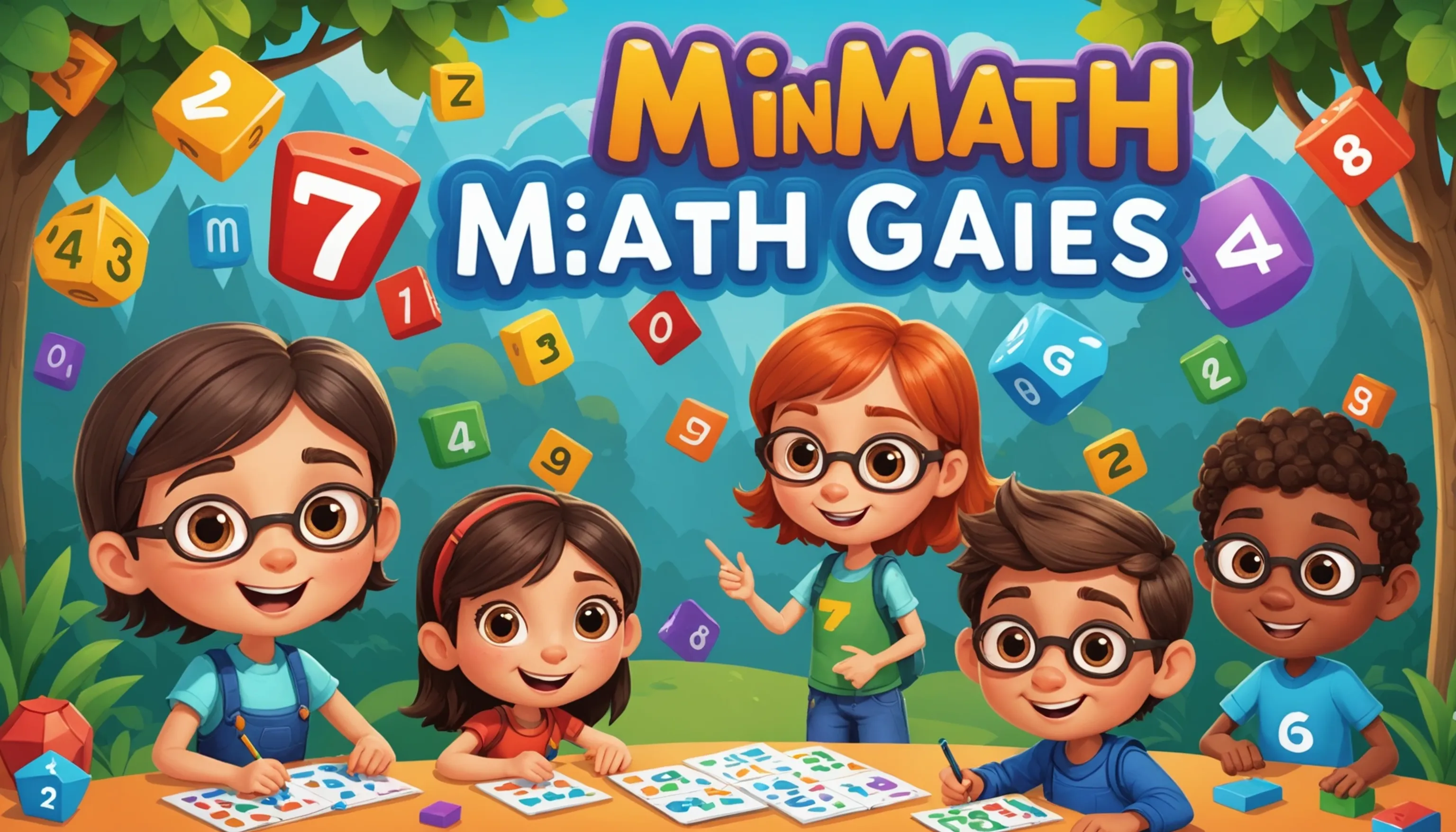Why Are Most Math Games Mini Games?
 HvWHenry van Wagenberg
HvWHenry van Wagenberg
Understanding the Popularity of Mini Math Games
Mini math games have surged in popularity among educators and parents alike due to their engaging and interactive nature. These games typically condense mathematical concepts into bite-sized challenges, making learning more accessible and enjoyable for teenagers. By incorporating elements of fun and competition, mini math games capture the attention of students who may otherwise struggle with traditional methods.
Moreover, their short duration allows for quick, focused learning sessions that fit well into the busy schedules of teens. This adaptability not only enhances motivation but also fosters a positive attitude toward math.
What are mini math games?
Mini math games are short, interactive activities designed to teach and reinforce mathematical concepts in a fun and engaging way. Typically lasting just a few minutes, these games can be played on various platforms, including computers, tablets, and smartphones, making them easily accessible to teenagers. They cover a wide range of mathematical topics, from basic arithmetic to more advanced subjects like algebra and geometry.
What sets mini math games apart is their ability to break down complex concepts into manageable, bite-sized challenges. This approach allows students to focus on one specific skill at a time, promoting better understanding and retention. For instance, a game may involve solving simple equations or completing puzzles that require addition, subtraction, multiplication, or division.
Many mini math games incorporate elements of gamification, such as points, levels, and rewards, which motivate students to engage more deeply with the material. These features encourage friendly competition among peers, making learning a social experience that can enhance motivation and participation.
Additionally, mini math games can be easily adapted to suit different learning styles. Visual learners might benefit from games that use graphics and animations, while auditory learners might prefer those that include sound effects and verbal instructions. This versatility ensures that all students can find a game that resonates with their preferred learning method, fostering a more inclusive educational environment.

The educational benefits of mini math games
Mini math games offer numerous educational benefits that enhance the learning experience for teenagers. One of the primary advantages is their ability to make learning math enjoyable and interactive. By transforming traditional mathematical concepts into engaging challenges, these games stimulate interest and motivation, which can lead to better academic performance.
Another key benefit is the opportunity for immediate feedback. As students play, they receive instant results on their performance, allowing them to identify areas for improvement quickly. This rapid feedback loop helps reinforce learning, as students can adjust their strategies and approaches in real-time. This aspect is crucial, as it encourages a growth mindset and resilience in the face of challenges.
Moreover, mini math games promote critical thinking and problem-solving skills. Many games require players to strategize and make decisions based on mathematical principles, fostering deeper cognitive engagement. As teenagers navigate through various levels and challenges, they develop analytical skills that are essential not only in math but also in everyday life.
Collaboration is another benefit of mini math games. Many games can be played in groups, encouraging teamwork and communication among students. Working together to solve problems can enhance social skills and create a supportive learning environment.
Lastly, the adaptability of mini math games allows educators to tailor learning experiences to individual students' needs. Whether a student struggles with basic concepts or excels in advanced topics, there is a mini math game that can cater to their specific learning level.
Why mini games engage teenagers more effectively
Mini games engage teenagers more effectively for several reasons. First, their short play sessions cater to the shorter attention spans typical of this age group, allowing for focused bursts of learning. Instant feedback and rewards create a sense of accomplishment, motivating students to progress further. Additionally, the variety and adaptability of mini games keep the experience fresh, appealing to diverse interests and learning styles. By incorporating elements of competition and social interaction, mini games foster a sense of community among players, making learning more enjoyable and encouraging teenagers to participate actively in their education.

Shorter play sessions and increased focus
One of the standout features of mini math games is their shorter play sessions, which align perfectly with the attention spans of teenagers. Unlike traditional educational methods that may require prolonged focus, mini games typically last only a few minutes, making it easier for students to stay engaged without feeling overwhelmed. This structure allows for concentrated bursts of learning, where students can immerse themselves in a specific mathematical concept without losing interest.
The brevity of these games encourages repeated play, allowing students to engage with the material multiple times in a short period. This repetition is crucial for reinforcing learning, as it helps to solidify concepts in their minds. As teenagers play these games, they can quickly identify areas where they may need additional practice and return to the game to refine their skills.
Moreover, shorter play sessions can lead to increased focus. In a world filled with distractions—such as social media, smartphones, and other digital content—mini games provide a focused environment where students can concentrate solely on the task at hand. The engaging nature of the games further enhances this focus, as the interactive elements and instant feedback keep players attentive to the challenges they face.
Ultimately, the combination of shorter play sessions and heightened focus makes mini math games an effective educational tool for teenagers. They help foster a productive learning environment where students can thrive and develop their mathematical skills while enjoying the process.
Instant feedback and rewards
One of the most compelling features of mini math games is the provision of instant feedback and rewards, which significantly enhances the learning experience for teenagers. Unlike traditional classroom settings, where students might wait for tests to receive their scores, mini games offer immediate evaluation of their performance. This instant feedback allows players to understand their mistakes right away, enabling them to correct misconceptions and improve their skills on the spot.
The feedback mechanism in these games often includes visual and auditory cues, such as score displays, animations, or sound effects that celebrate achievements. These elements create a sense of accomplishment and motivate students to continue playing and learning. When teenagers see their scores improve or receive virtual badges for completing challenges, they are encouraged to push themselves further. This reward system is crucial, as it taps into their desire for achievement and recognition, making math learning feel more like a game than a chore.
Additionally, instant feedback fosters a growth mindset. When students realize that they can learn from their errors immediately, they become more resilient and willing to tackle challenging problems without the fear of failure. This ability to iterate and improve in real-time helps build confidence in their mathematical abilities.
Overall, the combination of instant feedback and rewards transforms the learning process, making it more dynamic and engaging for teenagers. By actively participating in their educational journey, students develop a more positive attitude toward math and a genuine interest in mastering the subject.
Variety and adaptability in learning
The variety and adaptability of mini math games play a crucial role in engaging teenagers in their learning journey. These games cover a wide range of mathematical topics, from basic arithmetic to complex problem-solving, ensuring that there’s something for everyone. This diversity keeps the learning experience fresh and exciting, reducing the risk of boredom.
Additionally, mini math games can be tailored to meet individual learning styles and paces. Whether a student excels in visual learning or prefers auditory instruction, there are games designed to accommodate their unique preferences, fostering a more personalized educational experience.
How mini games cater to different learning styles
Mini math games are uniquely designed to cater to various learning styles, making them an effective educational tool for teenagers. Understanding that each student has a preferred method of learning is essential for fostering a productive educational environment. Mini games address this diversity through visual, auditory, and kinesthetic elements.
For visual learners, many mini math games incorporate colorful graphics, animations, and visual representations of mathematical concepts. These visuals help students grasp abstract ideas by providing concrete examples, making the learning process more relatable and easier to understand.
Auditory learners benefit from games that include sound effects, voice instructions, and verbal feedback. These auditory elements reinforce learning by engaging students through listening, allowing them to absorb information while interacting with the game. Hearing explanations and instructions can enhance comprehension, especially for those who thrive on auditory input.
Kinesthetic learners, on the other hand, engage better with games that require physical interaction, whether through touch screens or mouse clicks. Many mini math games include challenges that require players to manipulate objects or arrange numbers, thus providing a hands-on experience that makes learning more tangible.
Furthermore, the adaptability of mini math games allows educators to select games that align with their students' learning styles. This flexibility ensures that all learners can find a game that resonates with them, promoting engagement and improving overall academic performance. By catering to different learning styles, mini math games foster a more inclusive and effective learning environment.
The role of gamification in math education
The role of gamification in math education has become increasingly significant, particularly with the rise of mini math games. By integrating game-like elements into educational content, gamification enhances engagement and motivation among students. Here are some key aspects of gamification in math education:
- Increased Engagement: Gamification transforms traditional learning into an interactive experience. Students are more likely to participate actively when learning feels like a game, leading to higher levels of interest in math.
- Motivation through Rewards: Many mini math games incorporate rewards such as points, badges, or levels. These incentives encourage students to complete tasks and excel in their learning, fostering a sense of accomplishment.
- Immediate Feedback: Gamification provides instant feedback, allowing students to see the results of their efforts immediately. This immediate response helps them understand their mistakes and adjust their learning strategies accordingly.
- Safe Learning Environment: Mini games create a low-pressure atmosphere where students can experiment and make mistakes without the fear of failure. This freedom encourages risk-taking and exploration, which are essential for mastering complex math concepts.
- Social Interaction: Many gamified math platforms promote collaboration among students through multiplayer features. This interaction can enhance communication skills and foster a sense of community within the classroom.
Overall, gamification plays a vital role in making math education more dynamic and appealing to teenagers, leading to improved learning outcomes and a more positive attitude toward mathematics.
